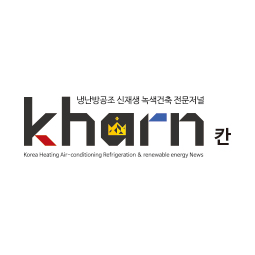The government held the New and Renewable Energy Policy Council (Chairman Ju Young-jun) on December 29, 2020, and the ‘5th Renewable Energy Technology Development and Use· The basic plan for dissemination (hereinafter referred to as the 5th basic plan) was deliberated and confirmed.

In the 5th basic plan, solar and wind power were set at 39.3% and 35.1%, respectively, and fuel cells were set at 12.5%, respectively.

In particular, the building sector is planning to supply 20% of the energy used to new buildings as new and renewable energy by utilizing the Zero Energy Building (ZEB) mandatory system with the aim of supplying new and renewable energy of 3.456,000 TOE.
The vision of the 5th Basic Plan is’accelerating the transition to a low-carbon economy and society through the establishment of a sustainable new and renewable energy diffusion base.’ To this end, the expansion of sector coupling centered on renewable heat and green hydrogen will be promoted.
 Accelerate realization of low-carbon society and economy
Accelerate realization of low-carbon society and economyFive major innovations such as △dissemination △market △demand △industry △infrastructure were suggested as the strategies for the 5th basic plan.
Dissemination innovation is promoted through diversification of participants and locations, expansion of distribution, and revitalization of private and joint investment. In particular, if the ZEB energy independence rate exceeds the standard, it plans to induce additional expansion of new and renewable energy by supporting installation subsidies.
To improve profitability, we will switch the RPS market to focus on long-term contracts and raise the RPS obligation ratio to 38%, the level necessary to achieve the 2034 supply target. In addition, the REC weighting system is reorganized to induce technology development and investment in new renewable energy facilities.
In particular, we will promote the spread of new and renewable heat, a source of non-electrical renewable energy, such as a mandatory method for each supply and demand target. Through this, efficient use of energy, minimization of conversion losses, and balanced supply of new and renewable energy are expected to be achieved.
In order to create various demand bases for renewable energy, companies and public institutions, centering on RE100, can purchase renewable energy power and recognize their use.
In addition, for a carbon-neutral society, sector coupling (linkage between power and non-power sectors) is promoted to convert and utilize renewable energy into other energy sources. To this end, P2X technology development and demonstration will be implemented based on the annual forecast of excess supply availability.
We create a new market for new and renewable energy through R&D linked to commercialization. In particular, it promotes the creation of a hydrothermal energy market through R&D for improving the performance of hydrothermal heat pumps and operating systems, revision of KS certification standards, and pilot projects. Considering the future performance of hydrothermal energy, the range of renewable heat will be expanded. In addition, a 100MW class green hydrogen mass production system will be established in 2030 through a green hydrogen demonstration project using renewable energy.
We start to reinforce the system and maintain the operation management system. To this end, it supports timely grid access through preemptive grid investment, and improves the grid operation system to respond to grid congestion and mitigate fluctuations in renewable energy.
For carbon neutrality in all sectors other than the power generation sector, sector coupling between energy sources centered on green hydrogen using P2X technology will be activated. In order to revitalize sector coupling, mandated provisions for each energy type such as heat, fuel, and power will be integrated.
Technology development for each energy source is also promoted. In the solar power sector, △High efficiency and high reliability Jeonilsa solar heat collection and high-density heat storage core technology △Solar heat-based building and industrial cold and hot heat supply system technology △Export large-scale solar power generation system commercialization and the development of absorption and storage technology above 600℃ will be promoted. .
In the geothermal field, △ geothermal resource exploration and evaluation technology for securing the economic feasibility of geothermal energy △ high temperature heat pump unit using low-GWP refrigerant △ hybrid geothermal heat pump system and low temperature driven geothermal power generation system technology are developed.
The hydrothermal field will be developed with △ river water cooling and heating and regenerative heat hybrid system technology △ complex technology for improving membrane filtration water treatment process through application of water heat △ deep low-temperature water utilization technology applied to high energy consumption facilities.
